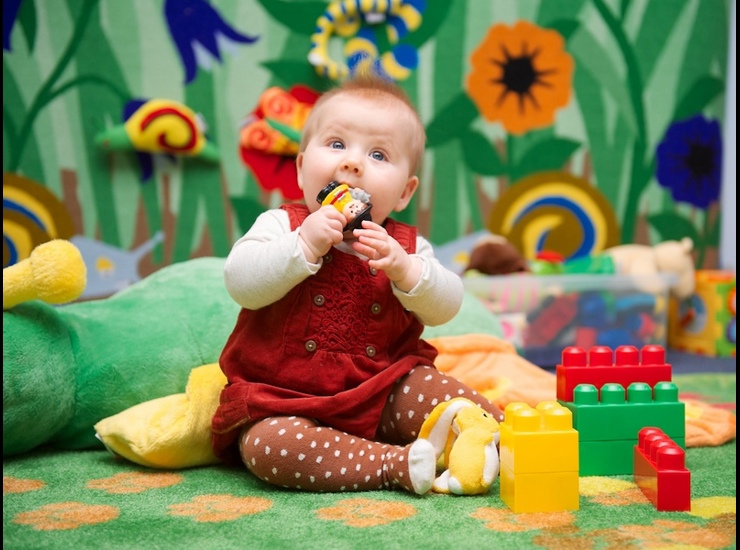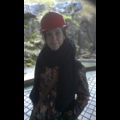
For decades, developmental psychologists have used ingeniously-designed studies to investigate how children learn about the things they see. Typically, we show children a category of items and let them become familiar with them. Then, we introduce them to new things. Because we know that toddlers prefer to look at new things rather than old things, their reaction to the new items can tell us a lot about how they learn. For example, we could show a toddler several different pictures of cats, and then show them a picture of a new cat next to a picture of a dog. If the toddler is more interested in the dog than the cat, we can tell they recognise the dog as new. In other words, they’ve learned a CAT category which excludes the dog picture.
These studies allow us to change aspects of the categories toddlers see, and based on these techniques it’s now well-established that small changes to these categories can have a big effect on what toddlers learn, and even how they learn their first words. For example, we know that experience with lots of different examples of a category makes it easier to learn the word for that category, and can even speed up vocabulary growth!
Despite knowing so much about how children behave in these studies, until recently there’s been a gap in our knowledge: our understanding of learning is limited to what toddlers and babies do in the lab. Toddlers outside the lab rarely come across a whole category of items at once, and they’re even less likely to interact with each item for the same amount of time. Instead, as any parent knows, toddlers are curious explorers who play with what they want, when they want! Only very recently have researchers started to examine how toddlers and babies learn when learning is curiosity-driven. For example, recent work has shown that when parents and babies play with toys together, what babies see is surprisingly different to what their parents see. Objects appear substantially bigger to babies than they do to adults, and it’s thought that this predominance of objects in babies’ visual field may be important for early category and word learning.
So, we know that toddlers love exploring, and that the way in which they explore affects their learning. But what drives them to explore? Why keep trying to walk – and fall over again, and again, and again – when you’re already an expert crawler? Where does this curiosity come from? Colleagues in robotics have explored this question with robots which learn via an internal reward system called “intrinsic motivation”, but so far there’s been little work investigating what happens in children (although this forthcoming work is a great example using puppy robots!).
We decided to tackle this problem using a computer model of how children behave in a recent category learning study. Instead of deciding what the model saw, we let it learn via curiosity. The model chose the order in which it saw images by comparing what it had already learned with how easily it could learn new items. We showed that the model learned best from images which are complex – but not too complex! This “Goldilocks” effect, by which learning is best supported by just the right amount of information, has been seen in related studies with babies.
What does this computational work tell us? It shows that given the chance to choose what it learned from and when, the model created an environment for itself that was just right for learning. It also suggests that toddlers’ curiosity is based on what they already know and how quickly they can learn, as well as what they’re seeing at the time. Of course, this is a computer simulation. Our next, important task is to explore some of these ideas with babies. Excitingly, because babies learn their first words for the categories that they see day-to-day, like CAT or SHOE, understanding how curiosity-driven learning works will help us understand the critical first steps in one of the most valuable skills a human being can learn – language.
Research into curiosity-driven learning is important because it helps us understand how children learn in the real world, rather than in a cleverly-designed study. After all, how many parents have time to meticulously plan everything their child sees that day? The important message that seems to be emerging from these early studies is that because they can construct their own “best” learning environment, it’s good to let toddlers explore!
This work will be presented at the Fifth Joint IEEE International Conference on Development and Learning and on Epigenetic Robotics, Brown University, USA, August 2015.
References
- Kidd, C., Piantadosi, S. T., & Aslin, R. N. (2012). The Goldilocks effect: Human infants allocate attention to visual sequences that are neither too simple nor too complex. PloS One, 7(5), e36399.
- Mather, E., & Plunkett, K. (2011). Same items, different order: Effects of temporal variability on infant categorization. Cognition, 119(3), 438–447.
- Oudeyer, P.-Y., & Smith, L. (in press). How evolution may work through curiosity-driven developmental process. Topics Cogn. Sci.
- Perry, L. K., Samuelson, L. K., Malloy, L. M., & Schiffer, R. N. (2010). Learn Locally, Think Globally: Exemplar Variability Supports Higher-Order Generalization and Word Learning. Psychological Science, 21(12), 1894–1902.
- Smith, L. B., Yu, C., & Pereira, A. F. (2011). Not your mother’s view: The dynamics of toddler visual experience. Developmental Science, 14(1), 9–17.
- Twomey, K. E., Ranson, S. L., & Horst, J. S. (2014). That’s more like it: Multiple exemplars facilitate word learning. Infant and Child Development, 23(2), 105–122.

